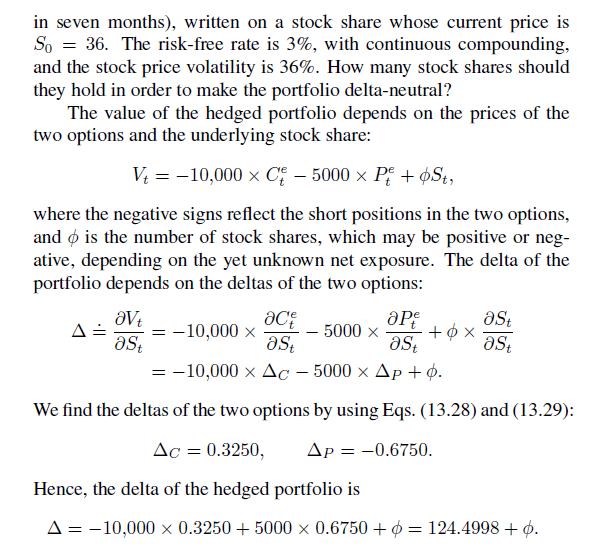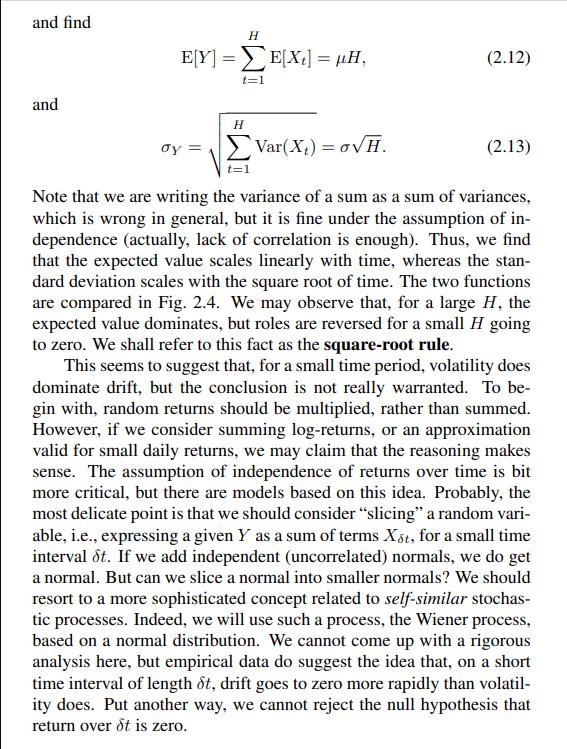The approximation of Eq. (13.31) is sometimes suggested as a possible way to approximate V@R of option
Question:
The approximation of Eq. (13.31) is sometimes suggested as a possible way to approximate V@R of option portfolios. For instance, with the data of Example 13.10, we may apply the following first-order approximation:

where we link the change in the portfolio value, \(V\), with the random return on the stock share, \(r=S S_{0}\). Say that we need the \(99 \%\) daily \(\mathrm{V} @ \mathrm{R}\). If we assume that the stock return is normally distributed, we find
![]()
where \(\quad d\) is the daily volatility of the stock share price. This may be estimated by scaling the annual volatility as follows:

where we use the square-root rule introduced in Example 2.1. The square-root rule is also the reason why we do not consider the stock share daily drift. Note that, to scale annual volatility down to daily volatility, we use 252 , which is roughly the number of trading days in one year. Hence,
![]()
Data From Example 13.10


Data From Equation (13.31)

Data From Example 2.1


Step by Step Answer:

An Introduction To Financial Markets A Quantitative Approach
ISBN: 9781118014776
1st Edition
Authors: Paolo Brandimarte





